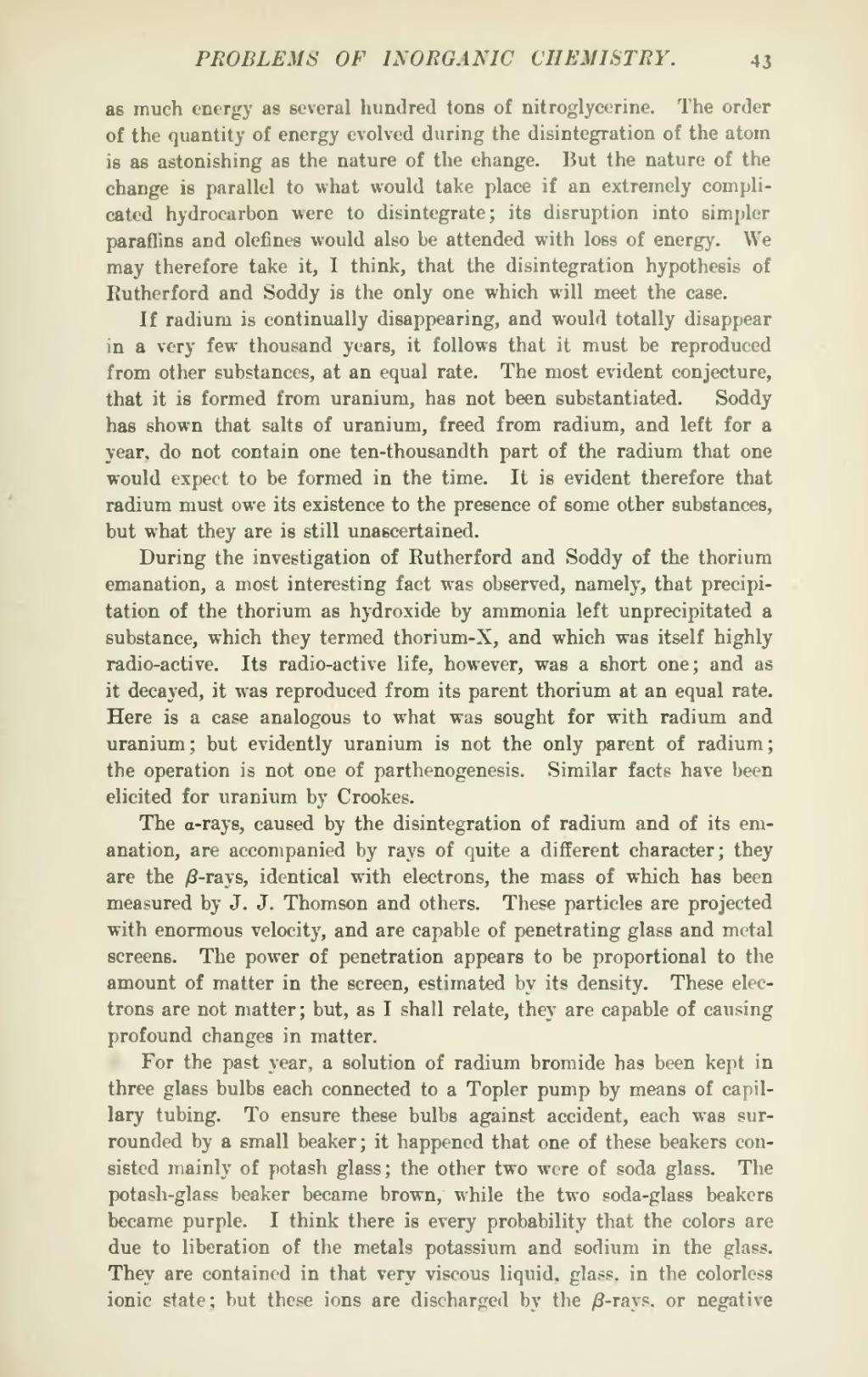as much energy as several hundred tons of nitroglycerine. The order of the quantity of energy evolved during the disintegration of the atom is as astonishing as the nature of the change. But the nature of the change is parallel to what would take place if an extremely complicated hydrocarbon were to disintegrate; its disruption into simpler paraffins and defines would also be attended with loss of energy. We may therefore take it, I think, that the disintegration hypothesis of Rutherford and Soddy is the only one which will meet the case.
If radium is continually disappearing, and would totally disappear in a very few thousand years, it follows that it must be reproduced from other substances, at an equal rate. The most evident conjecture, that it is formed from uranium, has not been substantiated. Soddy has shown that salts of uranium, freed from radium, and left for a year, do not contain one ten-thousandth part of the radium that one would expect to be formed in the time. It is evident therefore that radium must owe its existence to the presence of some other substances, but what they are is still unascertained.
During the investigation of Rutherford and Soddy of the thorium emanation, a most interesting fact was observed, namely, that precipitation of the thorium as hydroxide by ammonia left unprecipitated a substance, which they termed thorium-X, and which was itself highly radio-active. Its radio-active life, however, was a short one; and as it decayed, it was reproduced from its parent thorium at an equal rate. Here is a case analogous to what was sought for with radium and uranium; but evidently uranium is not the only parent of radium; the operation is not one of parthenogenesis. Similar facts have been elicited for uranium by Crookes.
The α-rays, caused by the disintegration of radium and of its emanation, are accompanied by rays of quite a different character; they are the β-rays, identical with electrons, the mass of which has been measured by J. J. Thomson and others. These particles are projected with enormous velocity, and are capable of penetrating glass and metal screens. The power of penetration appears to be proportional to the amount of matter in the screen, estimated by its density. These electrons are not matter; but, as I shall relate, they are capable of causing profound changes in matter.
For the past year, a solution of radium bromide has been kept in three glass bulbs each connected to a Topler pump by means of capillary tubing. To ensure these bulbs against accident, each was surrounded by a small beaker; it happened that one of these beakers consisted mainly of potash glass; the other two were of soda glass. The potash-glass beaker became brown, while the two soda-glass beakers became purple. I think there is every probability that the colors are due to liberation of the metals potassium and sodium in the glass. They are contained in that very viscous liquid, glass, in the colorless ionic state; but these ions are discharged by the β-rays, or negative
